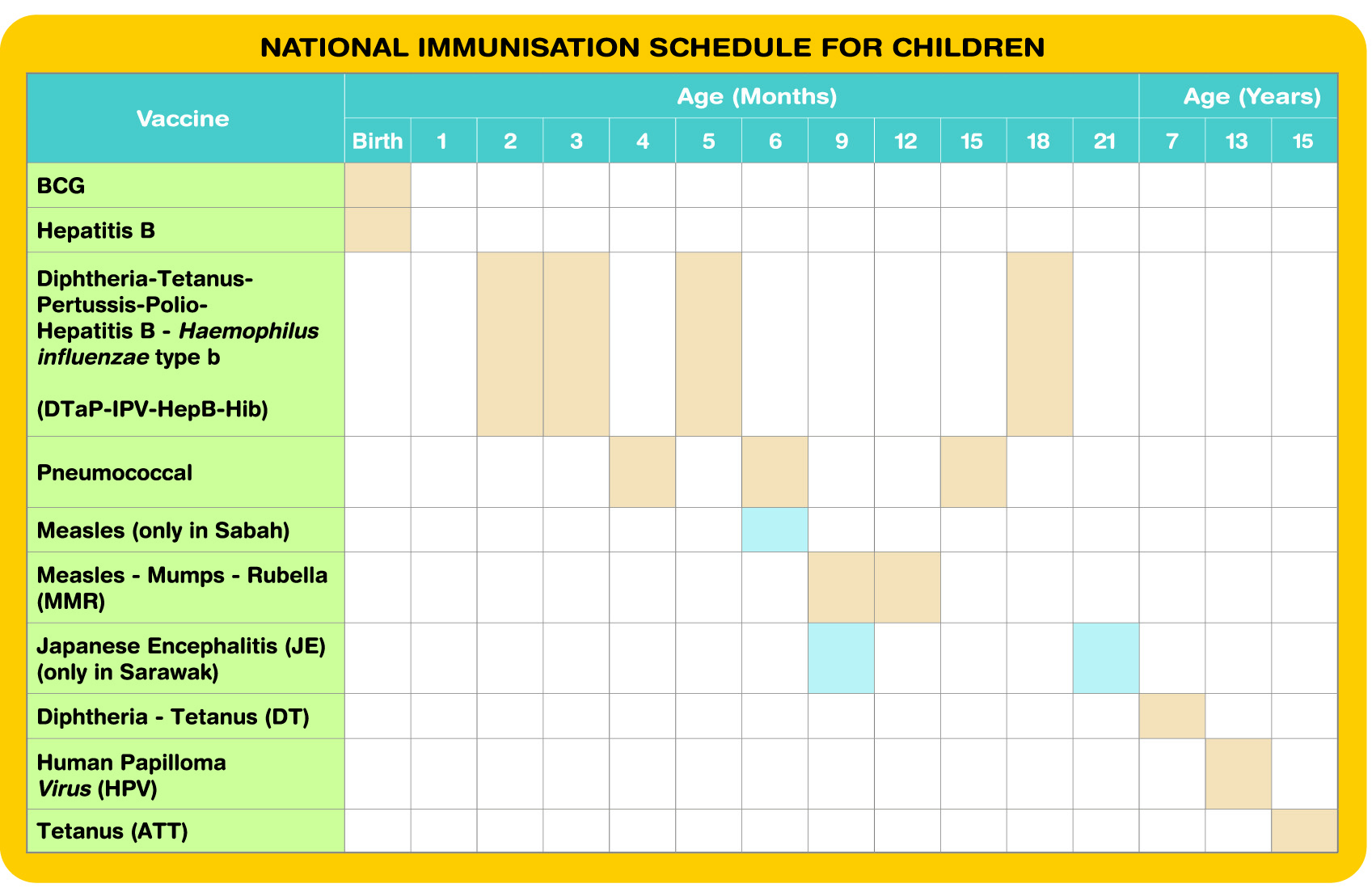Vaccines confer protection for the disease they cover. Since their introduction, vaccines have helped save many lives by protecting the young and old against potentially life-threatening diseases.
National Immunisation Schedule for Children

Why do we need multiple doses?
A peek into a child’s vaccination booklet will reveal the need for multiple doses for vaccines such as the DTaP/IPV/HepB/HiB, while only one dose of BCG is required. On the other hand, one needs to take the influenza vaccine annually. Why do some vaccines require multiple dosing, some require annual shots, while some are only given once?
To better understand this, let’s have a look at how vaccines work. Vaccines comprise bits and pieces of bacteria or viruses, which, when injected or ingested, will trigger the recipient’s immune system to produce antibodies. However, in young babies, one dose may not produce a high enough level of antibodies, or the antibodies may not last long. In order to generate a sufficiently high level of antibodies and for these antibodies to last longer, multiple doses are given. These doses are timed such that it pushes the antibodies to a higher level.
Examples of vaccines that require multiple dosing in infancy, and booster doses are:
- Diphtheria/Tetanus/Pertussis/IPV/Hepatitis B/HiB (hexavalent vaccine)– given at 2, 3 and 5 months as the primary series, and 18 months as a booster dose
- Measles, Mumps and Rubella (MMR)– given at 9 and 12 months
- Pneumococcal Conjugate Vaccine (PCV)– given at 4 and 6 months as the primary series, and 15 months as a booster dose
Why do we need to take the influenza vaccine every year?
On the other hand, influenza vaccine needs to be administered annually. Why is this the case? Wouldn’t one dose suffice?
The influenza virus comprises several strains, of which two strains affect humans. These are Influenza A and B. Within these strains are several subtypes, and they mutate regularly. A vaccine for a particular subtype, like H1N1, for example, will not confer protection to other subtypes. In order to be protected, a person needs to get the latest vaccine. In addition, the antibody levels start to drop towards the end of a year and is no longer sufficient to confer protection.
The current influenza vaccines in the market are what is called quadrivalent vaccines. They comprise two strains of Influenza A and two strains of Influenza B. The strains in the vaccine is determined by experts based on their observations and predictions.
Who should take the influenza vaccine?
The influenza vaccine can be given as early as 6 months old. Ideally, everyone should take their annual influenza shots. Some groups are at higher risk of getting severe influenza infection. They are:
- Pregnant women
- Children under the age of 5 years
- Adults over 65 years of age
- Healthcare workers
- Individuals with chronic medical conditions, e.g. diabetes, asthma, chronic lung disease, chronic obstructive pulmonary disease
- Family members who live with young babies and other vulnerable individuals who may not be able to take the vaccine
Do ask your doctor about the annual influenza vaccine. It could save your life and that of others.





